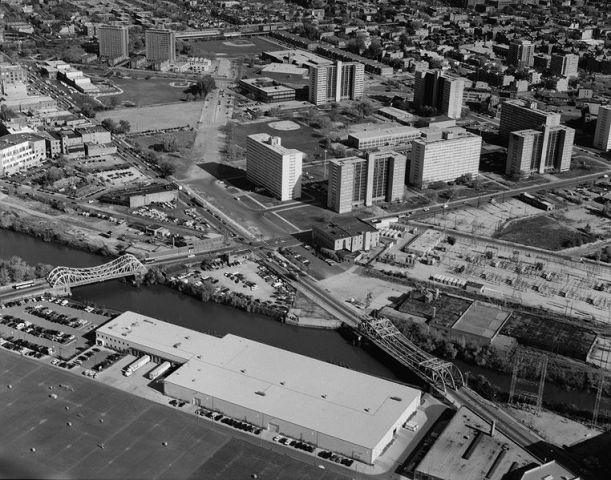The Friday Afternoon Flashback: Cabrini-Green
By Chuck Sudo in News on Dec 10, 2010 10:05PM

Cabrini Green in 1999. (Photo Credit: Jet Lowe, U.S. National Park Service)
When people talk about Chicago being a "hyper-segregated" city, often they're referring to how the row homes and high-rises were situated in areas that were cut off from the rest of the city, most commonly by the expressways or a lack of adequate public transportation.
Cabrini-Green was the anomaly, in that it was always situated a stone's throw from affluence, having been constructed at the meeting point between the Gold Coast and Lincoln Park. It eventually came to epitomize the problems with public housing in America.
But the area had a history of crime long before the Frances Cabrini Rowhouses were built. A map of Chicago's gangland drafted in 1931 listed the corner of Sedgwick and Locust as "Death Corner." Cabrini was also an integrated community until the postwar industrial layoffs forced residents to chase down jobs in other factories further away, pulling up stakes in the process.
We know the horror stories of malfunctioning elevators, trash piled in chutes as high as the buildings, how individual gangs came to control buildings in an urban turf war. Girl X. Jane Byrne's moving in to Cabrini-Green to raise awareness to the situation to what was happening there.
The eviction of Annie Ricks yesterday closes the book on Cabrini-Green, but it wasn't unique. When the federal government mandated the destruction of 18,000 Chicago public housing units in 1996, Cabrini-Green residents fought to ensure their right to public housing. They ultimately obtained a consent decree promising that some buildings would remain standing while the new homes that now dot the high-rises were built, so they could have a chance to obtain adequate housing.
And we can't forget the thousands of residents who managed to make a life in Cabrini-Green, who managed to find beauty in the face of a futile battle. Online, Cabrini-Green.com documents the demolition of the project. Ronit Bezalel and Antonio Fererra's "Voices of Cabrini" documented the demolition on film and provided such a treasure trove of information that a sequel is in the works. the movie is also slated for a 2011 video release.